#goatsbeard
Text
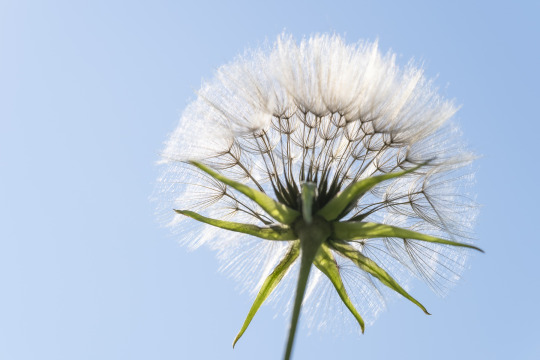
Wiesen-Bocksbart (Tragopogon pratensis)
goatsbeard
#salsify#goatsbeard#flower#Bocksbart#seed head#macro#detail#close up#nature#nature photography#photographers on tumblr#original content#natur-nah-dran.de#Kristian Papp#Juni2023
35 notes
·
View notes
Text
Tragopogon--Goatsbeard/Salsify
The flower is kind of interesting, but the seedhead is where it really shines. Quite literally! They aren't native to North America, but not invasive as far as I know.
All photos mine, all unedited as far as I recall.




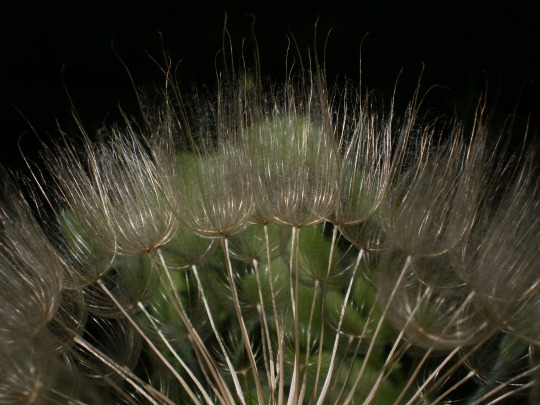
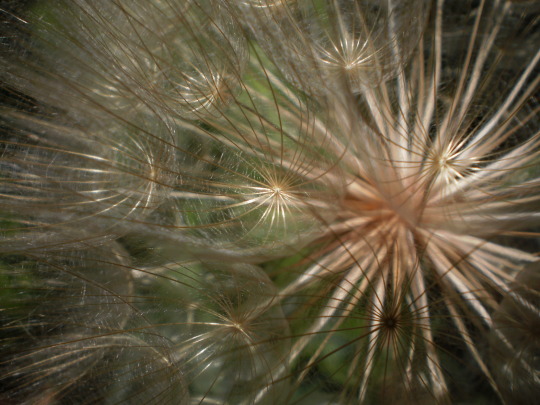
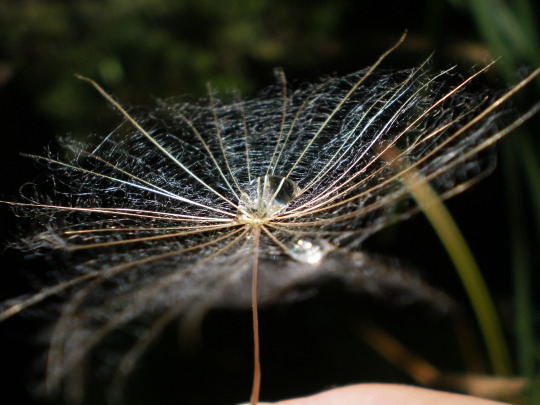
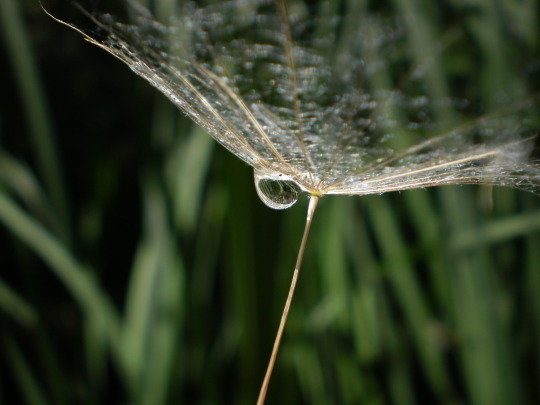

#goatsbeard#salsify#Tragopagon#seedheaads#flowers#my photos#photography#blackswallowtailbutterfly#weeds
2 notes
·
View notes
Text
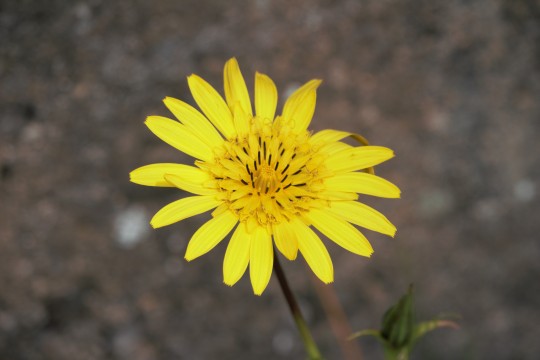
barba di becco
#photography#my photos#flowers#tragopogon pratensis#i think#barba di becco#goatsbeard#meadow salsify
4 notes
·
View notes
Photo

Goat’s Beard/Ivy-leaved Toadflax/ Eyebright/Bee Orchid/ Tormentil/ Ringlet Butterfly #naturejournal #igperpetualjournal #illustration #butterfly #wildflowers #journalpages #gouachepainting #watercolour #sketchbookjournal #goatsbeard #ivyleavedtoadflax #beeorchid #tormentil #eyebright #ringletbutterfly #potentillaerecta #euphrasiaofficinalis #ophrysapifera #cymbalariamuralis #tragopogonpratensis #aphantopushyperantus https://www.instagram.com/p/CfKa1TkI38V/?igshid=NGJjMDIxMWI=
#naturejournal#igperpetualjournal#illustration#butterfly#wildflowers#journalpages#gouachepainting#watercolour#sketchbookjournal#goatsbeard#ivyleavedtoadflax#beeorchid#tormentil#eyebright#ringletbutterfly#potentillaerecta#euphrasiaofficinalis#ophrysapifera#cymbalariamuralis#tragopogonpratensis#aphantopushyperantus
9 notes
·
View notes
Photo

Aruncus sylvester or goatsbeard botanical illustration
3 notes
·
View notes
Photo

Grand Rapids Pathway
Design suggestions for a sizable traditional stone garden path in the summer.
1 note
·
View note
Photo

Pathway Landscape Grand Rapids
Design suggestions for a sizable traditional stone garden path in the summer.
0 notes
Text
Teen Latina Emily Willis Enjoys A Rough Fuck In The Shower
Black penis is inserted in tight anal opening of hot white babe
Good looking amateur babe fingers herself before giving head
Boy spanked and left nude gay Spank Bros Beat Each Other
Pretinha na siririca
Girl masturbate with dildo
Blondie gets penis to harm her pussy in amateur hardcore
Desi Step Sister fuck with cousins
Smoking Teen Getting Fucked
Divine Marsha May gets copher pleasured
#goatsbeard#hemocytoblast#miscellaneously#bowstrung#Cheston#death-polluted#idealistically#quasi-diplomatically#hepatopancreas#bucktoothed#gonoplasm#parietoquadrate#chockful#Holdrege#electrobus#side-skip#redeems#rejuvenant#pambanmanche#fee-splitter
1 note
·
View note
Photo
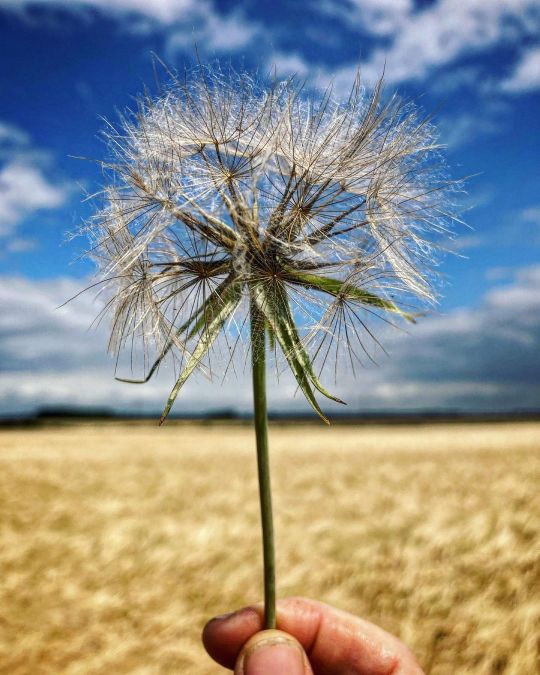
Love a goatsbeard dandelion. . . . #goatsbeard #goatsbearddandelion #dandelion #dandelionseeds #summerweeds #wildflower #fieldedge #fieldedgeflowers (at Harrowby, Lincolnshire) https://www.instagram.com/p/Cf_WADqg_me/?igshid=NGJjMDIxMWI=
#goatsbeard#goatsbearddandelion#dandelion#dandelionseeds#summerweeds#wildflower#fieldedge#fieldedgeflowers
0 notes
Text

merfolk of the day: aladine from one piece
11 notes
·
View notes
Text

Pasture Goatsbeard - Craveiro-da-serra (Tragopogon hybridus)
Arrábida/Portugal (10/04/2023)
[Nikon D7100; ∑150mm F2.8 EX DG OS HSM APO Macro with Circular Flash Nissin MF 18; 1/320s; F22; 400 ISO]
17 notes
·
View notes
Photo



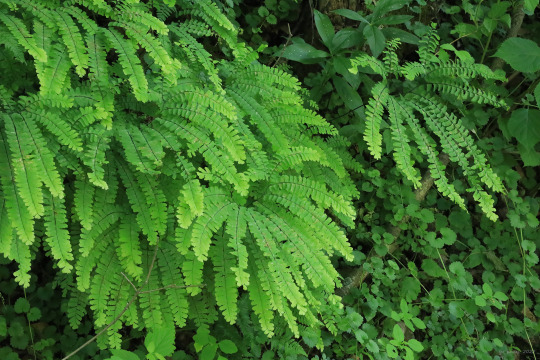

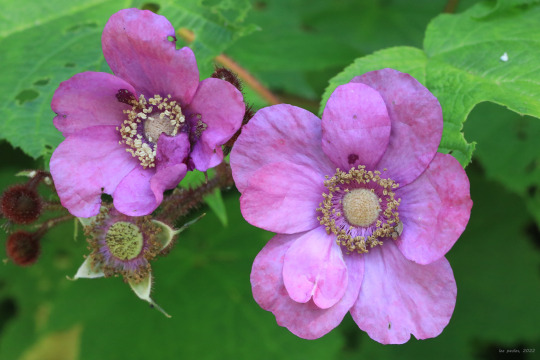

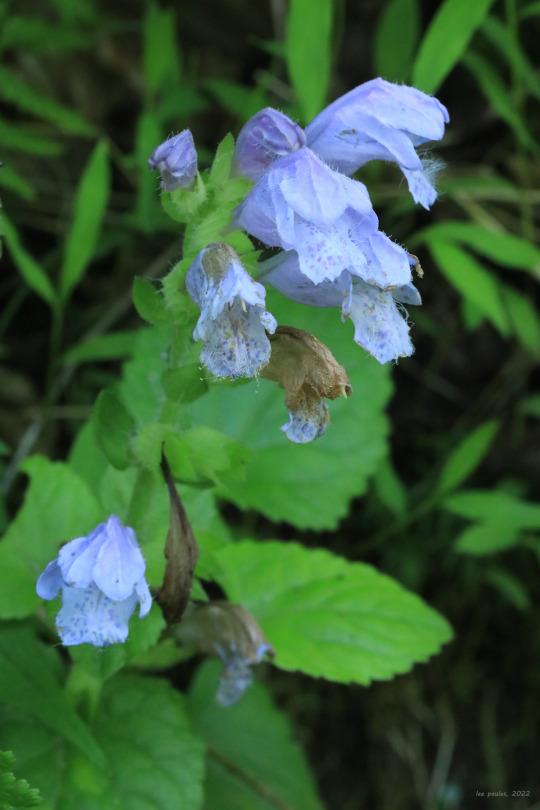
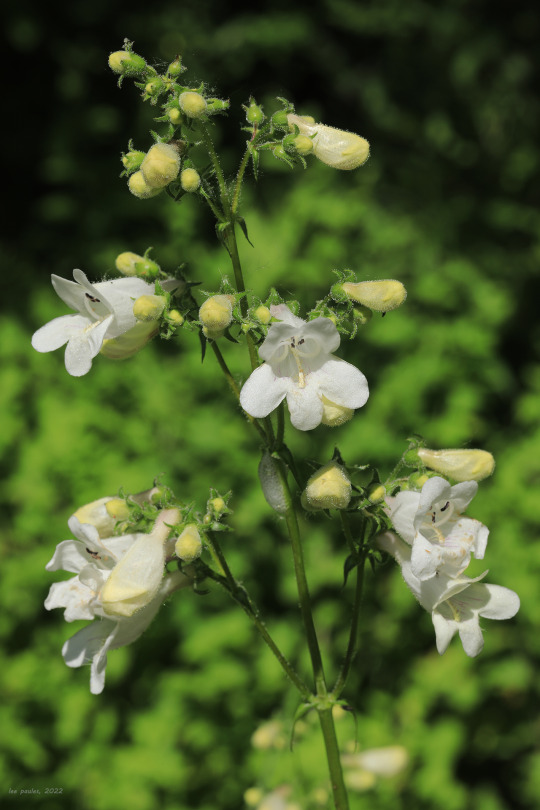
A gorgeous late spring afternoon means only one thing to me: a long, leisurely bike ride on the Mon River Trail. Eastern goat’s beard (Aruncus dioicus), with its gaudy, plume-like flowers, is now at peak bloom on the moist, rich slopes bordering the trail. This rhizomatous perennial in the rose family is one of Appalachia’s most spectacular spring-blooming wildflowers and has a rambling, bushy habit that makes it the perfect ornamental for a damp, partially-shaded spot in a native wildflower garden. This plant is easily mistaken for Appalachian false goat’s beard (Astilbe biternata), which grows in the same habitat and has a similar flower plume but with a different leaf arrangement.
Other notable plants now coming into their own (from top): northern maidenhair fern (Adiantum pedatum), which cascades down the moist slopes along the trail in radiant waves; purple-flowering raspberry (Rubus odoratus), a showy, suckering cousin to Allegheny blackberry with gorgeous flowers and foliage and bristly, not-so-tasty fruit; whorled loosestrife (Lysimachia quadrifolia), an elegant, upright perennial with yellow flowers borne from the leaf axils; Meehan’s creeping mint (Meehania cordata), a striking, deer-resistant perennial that forms spreading mats of lavender flowers; and foxglove beardtongue (Penstemon digitalis), a tall, captivating perennial named for the hairs that grow from its staminode (long, sterile stamen).
#appalachia#vandalia#west virginia#mon river trail#spring#wildflowers#flora#fern#aruncus dioicus#eastern goat's beard#eastern goatsbeard#bride's feathers#adiantum pedatum#northern maidenhair fern#rubus odoratus#purple-flowering raspberry#lysimachia quadrifolia#whorled loosestrife#meehania cordata#meehan's creeping mint#meehan's mint#penstemon digitalis#foxglove beardtongue
67 notes
·
View notes
Photo
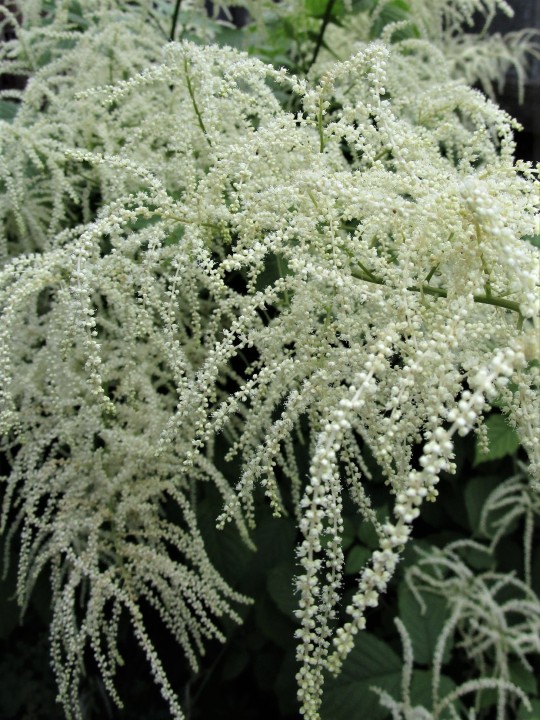

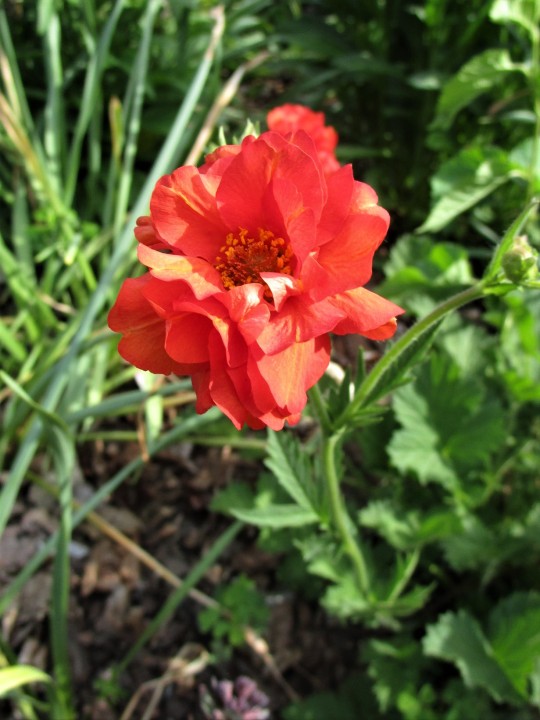
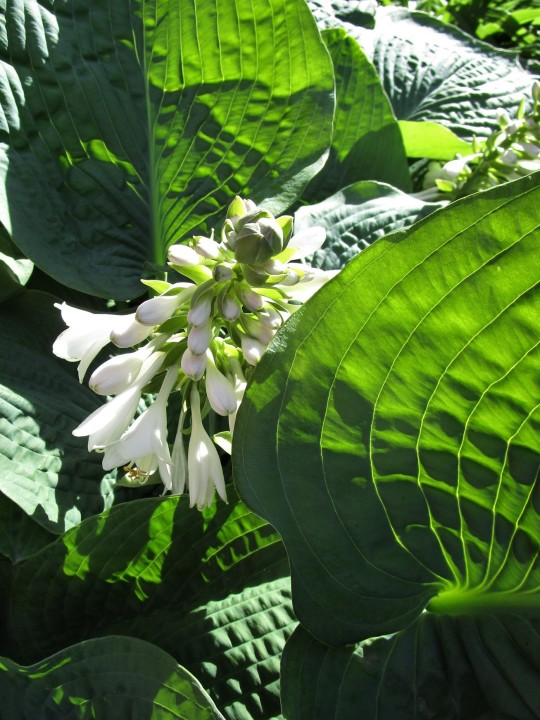

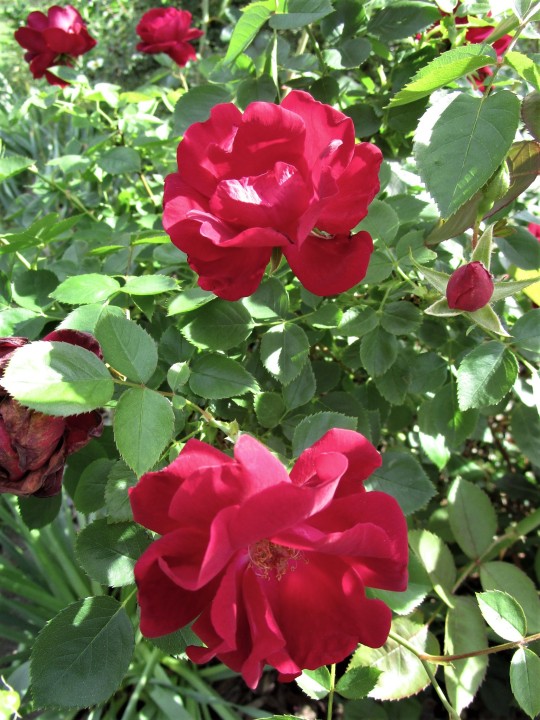



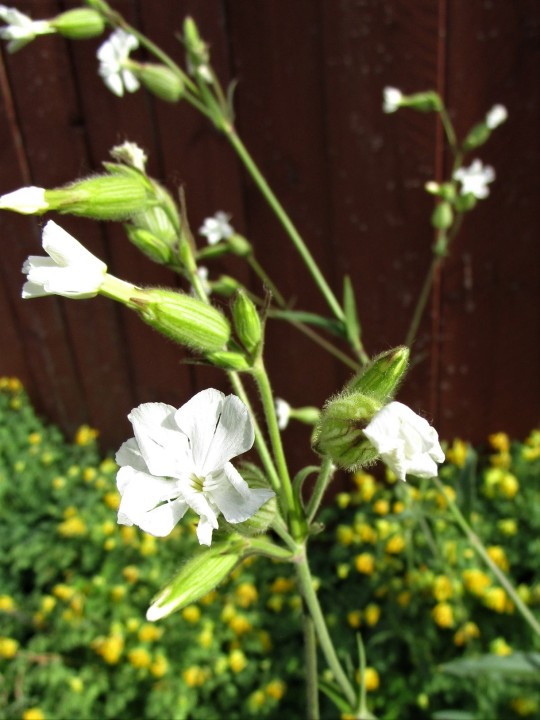
In My Garden - June 18, 2022
Goatsbeard (Aruncus dioicus), Geum (Avens), Hosta, Cinquefoil (Potentilla), three different roses, Campanula “Sarastro” bellflower, and . . .
I don’t know what the white flower in the last photo is. It’s something I would normally have weeded out, but I let it grow to see what it was. It’s about 4 feet tall and kind of gangling.
Photos by Charles Reeza
14 notes
·
View notes
Note
omg how about all ericons kids and their favorite flower?Like what vibe they give off when it comes to flowers. please do this one I want to paint everyone's flower in watercolor :D
(It's a project of mine :)) )
i'm sorry i know nothing about flowers i don't think i'm the best person to go to for this 😭 i usually just write fanfiction. i can try though, so here are my thoughts. and these are just based off of vibes LOL. i think i got everyone
clementine: snapdragon
aj: sunflower
louis: gerbera daisies
violet: irises
mitch: cardinal flower / globe thistle
aasim: asters
marlon: gazania
ruby: foxglove
willy: goatsbeard / butterfly weed (because it sounds funny)
brody: gomphrena
omar: lantana
tenn: lobelia
9 notes
·
View notes
Text

🌼 Linné's Floral Clock, where each hour on the dial corresponds to the opening and closing of the flower petals. Linné created this composition in summer in a garden in Uppsala, Sweden, at a latitude of 60 degrees. The results would have been different at another latitude or season.
On the bottom left side, starting at 6am, are the plants that open in the morning. Some of these would be:
5-6 am: dandelion, sow thistle, morning glory, spotted cats ear
6-7 am: hawkweed, water lily, garden lettuce
7-8 am: scarlet pimpernel, proliferous pink
8-9 am: Field marigold, gentians
9-10 am: Helichrysum, California poppy, calendula
10-11 am: Star of Bethlehem
11am-noon: passionflower, goatsbeard
In the right half of the sphere, beginning at twelve o'clock, are the plants with flowers that close in the afternoon between:
12-1pm: Chiding pink, marsh sow thistle
1-2 pm: Scarlet pimpernel
2-3 pm: Hawkbit
3-4 pm: small bindweed, California poppy, ice plant, calendula
4-5 pm: Rough hawkbit, spotted cats ear
5-6 pm: Evening primrose, moonflower, white waterlily
0 notes
Text
Dig and Divide
“There are no happier folks than plant lovers, and none more generous than those who garden.” Ernest Wilson
Many years ago, I was considering adopting two miniature ponies. When I visited the ranch where they were living there was a small pond surrounded by a flush of gorgeous pink blooms that I had never seen before. When I asked the property owner what they were, she told me they were Naked Ladies, a bulb that boasted bright green spear-like foliage in the winter. When the foliage died at the end of spring, it was necessary to remove the brown leaves, leaving the turtle- shaped bulbs slightly protruding from the ground. Indicating that her Naked Ladies needed dividing, she dug up a bulb, instructing me to plant it in the sun “anywhere”, irrespective of soil condition. “Wait for next summer’s surprise,” she said. I followed her directions, and that one bulb has evolved into many hundreds that blanket my hillside in a sea of pink perfection. Over the years I have divided, dug, and donated bulbs to many friends, offering them a summer surprise. Dig and divide! It makes me so happy!
Share StarStyle® Empowerment
This time of year is a perfect time to divide a wide variety of bulbs and perennials. Besides increasing the number of plants in your garden, divisions can be given to other gardeners. Dividing overcrowded plants will give the remaining plants room to grow, maintaining their health, and rejuvenating your beds.
Before you begin, water the area well a few days before digging. With a shovel or garden fork, dig a large area to remove a clump with the root ball, bulbs, or rhizomes intact. Once out of the ground, shake off the excess dirt and cut or pull apart individual crowns. For perennials, make sure you have roots and leaves. Bulbs and rhizomes need roots attached. To avoid having the roots dry out, plant immediately in another area at the same depth and water deeply. To conserve moisture, add mulch to these newly divided plants.
Overcrowded and overgrown plants will not bloom profusely, however, not all perennials or bulbs benefit from dividing. It’s best to leave Baptista, goatsbeard, lupine, milkweed, Russian sage, peony, red hot poker, bleeding heart, Hellebores, lavender, verbena, and oriental poppies alone.
Plants that need dividing every few years (two to five years) for peak performance include:
Agapanthus
Bearded and Dutch iris
Daylilies
Daffodils and Narcissus
Hosta
Lilies
Monarda
Phlox
Cymbidium orchids
Astilbe
Rudbeckia
Echinacea
Yarrow
Lamb’s Ear
Blanket Flower
Aster
Coreopsis
Naked Ladies
Agave
Thimbleberries
When dividing plants, follow these general guidelines:
Prepare the soil: Amend the new location with compost and choose a well-draining location for the divisions.
Water: Before dividing, water the plants thoroughly to ensure they are adequately hydrated.
Dig: Only divide healthy specimens. Be careful to not damage the roots or bulbs by gently digging up the plant clumps using a shovel or garden fork. Start at the drip line by creating a trench and work inwards.
Divide: The best time to divide is when flowering has halted. Once the clump is out of the ground, clip off the remaining stems at the base and trim any dead or dying leaves and roots. Carefully separate plants into smaller divisions using your hands or a sharp knife. Make sure that each division has healthy roots.
Replant: Plant the divisions at the same depth as where the original plant was growing. Water deeply and mulch to conserve moisture.
Maintenance: To establish these new divisions, continue to water and watch. Remove weeds, leaf debris, and grassroots from beds and add a mulch of straw or wood chips. After the blooming season, spent blooms, as well as spent branches, can be removed carefully to keep your beds looking fresh and colorful.
Bulbs should be divided when they are noticeably overcrowded. Bulbs produce offshoot bulbs and as they grow, flowers diminish although leaves flourish. This is when you know it’s time to divide. Let the foliage die back naturally as the plant needs that energy for next year’s growth. Although most plants can be divided in spring or fall, by dividing plants in September, the root systems are allowed to grow before winter arrives. Sometimes when dividing in spring, the heat arrives before the roots have had a chance to develop. Ask for assistance from your nursery or gardening expert if you feel your plant has any specific needs. Follow best practices and you will be rewarded with a healthy garden with a plethora of flowers.
The agapanthus that I grow in my garden came from divisions. My favorite color is the midnight blue agapanthus followed by the pure white species. This season I will be dividing my agapanthus and my iris. The healthy green leaves of the iris will be left undisturbed until later this month, then I’ll trim the leaves to approximately six inches and start dividing.
If you are looking for easy-to-care desert-loving species that require minimal water, agave and prickly pear cacti may fit the bill. Agave is propagated by separating the pups from the mother plant and replanting in another location in sandy or gravel-filled soil. If you enjoy eating the fruit of the prickly pear cacti, and admiring its pretty flowers, I suggest you plant one at the back of your garden so that the spines won’t interfere with your other gardening tasks. The fruit is delicious, the flowers are bold, yet the spines are ferocious. Make sure to wear heavy gloves when working with prickly pears. If you don’t want to cultivate a jungle of these cacti, make sure to pick up and discard any pads that fall on the ground. No need to divide a prickly pear…they spread on their own via dropped pads.
Gardening and sharing the bounty results in joy and happiness. I’ve been fascinated by the flocks of mourning doves that have decided to call my garden home. They do devour my mulberries, but they also eat enormous amounts of weed seeds. Each night I go to sleep to their calming cooing. These peaceful birds don’t seem to mind me photographing them, even in their nests. (See photo).
I didn’t adopt the adorable miniature ponies because the family decided to keep them (smart move), yet I am forever grateful for that single division of the Naked Lady as these belladonnas have brought such beauty to my landscape and the gardens of others. Divide, share, and be happy!
Mark Your Calendar:
On Saturday, September 30th, Be the Star You Are!® will host a booth sponsored by the Lamorinda Weekly Newspaperand MBJessee Painting at the Pear and Wine Festival in Moraga. Stop by to plant seeds and pick up bags of free potpourri. More info at https://www.bethestaryouare.org/events-1/2023-pear-and-wine-festival
Happy Gardening. Happy Growing. Divide and Delight!
For more gardening advice for all seasons, check out Growing with the Goddess Gardenerat https://www.CynthiaBrian.com/books. Raised in the vineyards of Napa County, Cynthia Brian is a New York Times best-selling author, actor, radio personality, speaker, media and writing coach as well as the Founder and Executive Director of Be the Star You Are!® 501 c3. Tune into Cynthia’s StarStyle® Radio Broadcast at www.StarStyleRadio.com.
Her newest children’s picture book, Family Forever, from the series, Stella Bella’s Barnyard Adventures is available now at https://www.CynthiaBrian.com/online-store.
Hire Cynthia for writing projects, garden consults, and inspirational lectures. [email protected]
Read Lamorinda Weekly: https://www.lamorindaweekly.com/archive/issue1714/Digging-Deep-with-Goddess-Gardener-Cynthia-Brian-Divide-and-delight.html
©2023 Cynthia Brian. Photos and Text, All Rights Reserved.Subscribe
Share StarStyle® Empowerment
#[email protected] http://www.GoddessGardener.com#divideanddelight#plants#septembergardenign#cynthiaBrian#starstyle#gardengoddess
0 notes